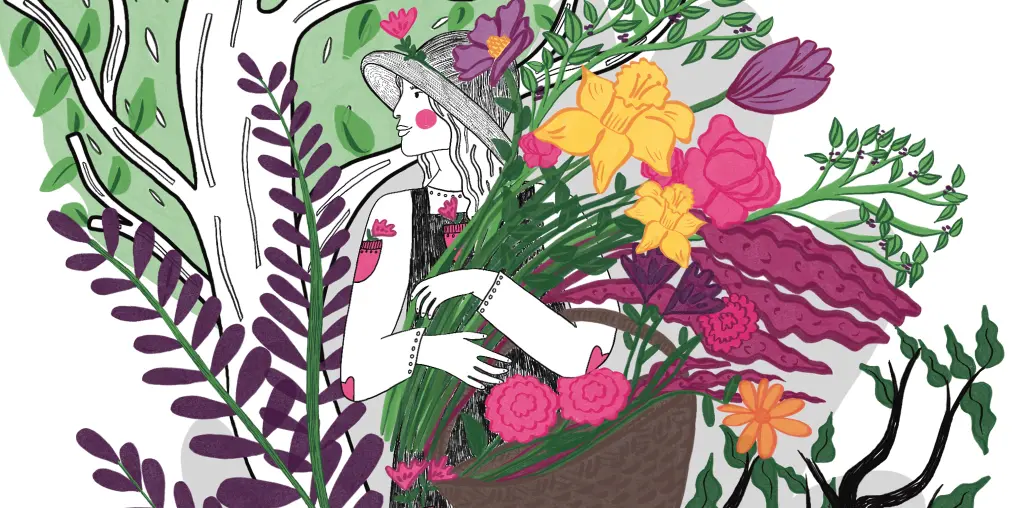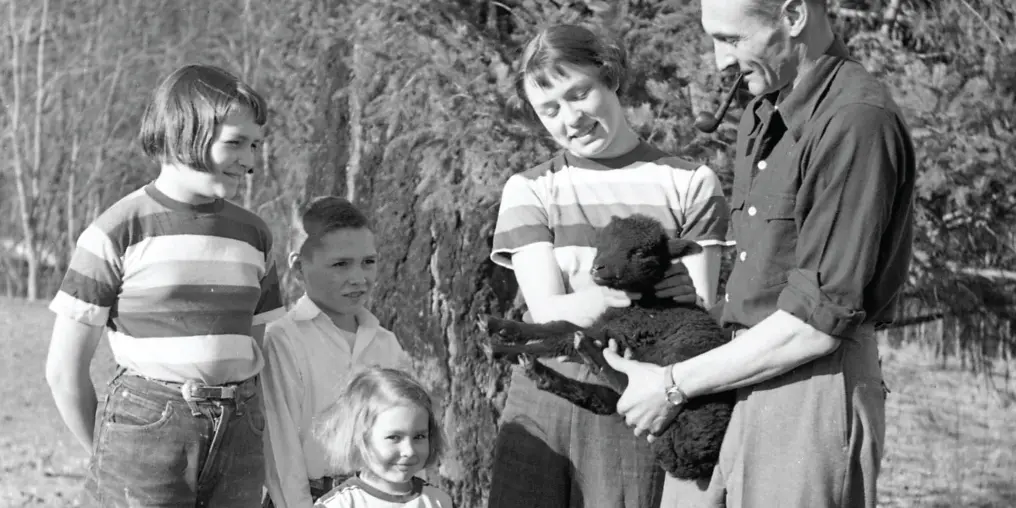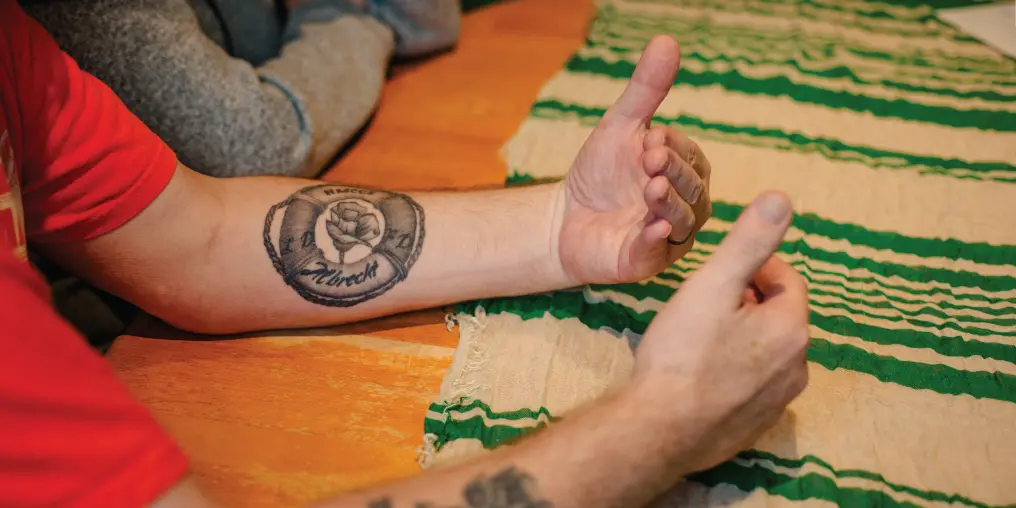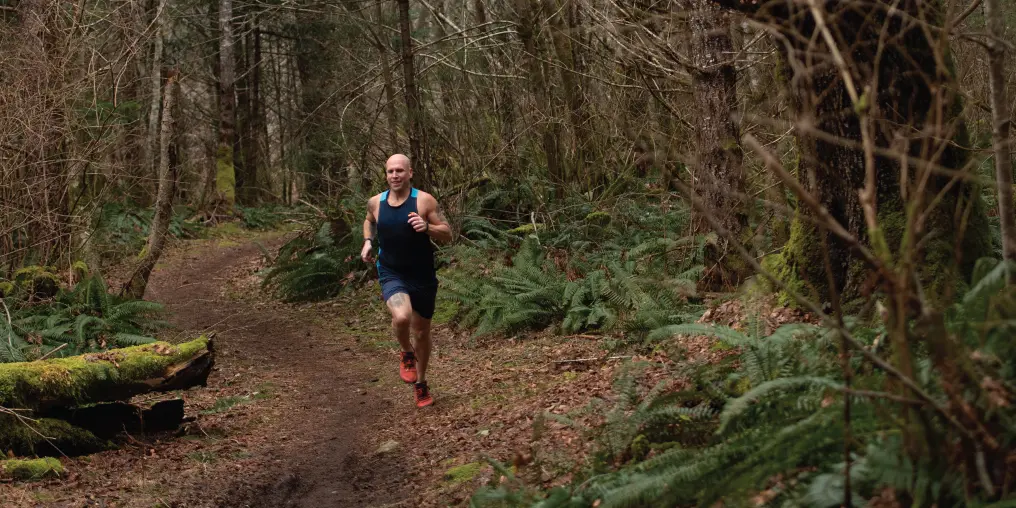“The glory of gardening: hands in the dirt, head in the sun, heart with nature. To nurture a garden is to feed not just on the body, but the soul.”
–Alfred Austin
I did not come to ‘the dirt’ immediately. But now, it is in my bones. Many of my ancestors were stewards of the land in Saskatchewan (where I grew up) dating as far back as the 1500s. My grandmother, Vivian, always had the most stunning gardens. There are many photos of us in front of the corn or shrubs to mark how tall we, or they, were! When I am in the garden, touching the earth, cultivating the soil, I am nourished and at home.
Jessica’s background and inspiration
Professionally, I am a Registered Social Worker, with a recent certification in Horticultural Therapy. I started my first garden when my husband and I bought our first home in 2010, and we have had gardens ever since. The soil, the earth, is my refuge. Initially, I planted a garden as “that’s just what you do on the prairies,” but it became the place that nurtured my soul when I didn’t think I had anything more to give. Some days, as a social worker, there is not always a lot of hope, but planting the bulbs and sewing seeds reminds you there is a future.
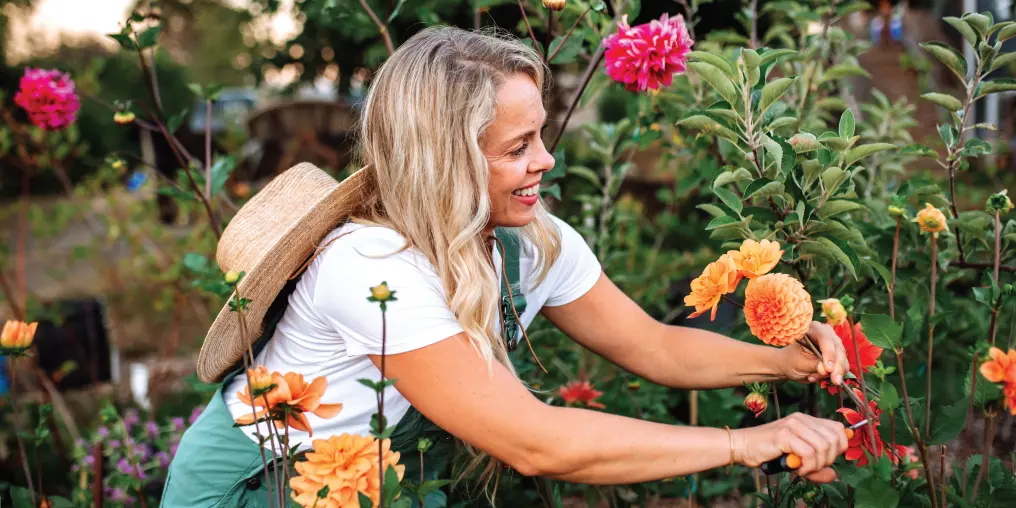
As I planted vegetables to nourish my growing family, I slowly began incorporating flower gardens to aid in pollination. During my time as a social worker, a few things happened that significantly impacted my mental health. I found solace in the pages of flower books and gardening social media accounts.
I discovered people growing exceptionally beautiful flowers and felt inspired to try and do the same. I started planting more and more, and, by the next summer, I returned home from a family holiday to even more flowers than I knew what to do with. To share the abundance, I created bouquets, and, much to my surprise, found the process therapeutic. The following summer (2023), I became purposeful in my vision and started hundreds (maybe even thousands) of seedlings in my basement. This allowed me to play in the dirt, as well as alleviate some of the anxiety and depression that grey winters cause me.
Toxic practices in the flower industry
One of the things I have noticed in the flower industry is that many of the practices are toxic. However, there are many amazing growers, and creatives, who do not grow or create that way. Toxic practices do not align with my values or my vision, so my arrangements are created from flowers I grow myself (most often from seed) or from sustainably foraged materials. Year-round, I wander with my wicker basket, looking to the forest for inspiration—sometimes snipping little twigs of huckleberry or salal to complement the flowers I’ve grown—always with deep reverence for the land. Due to this commitment, all of my bouquets are fully compostable and organic.
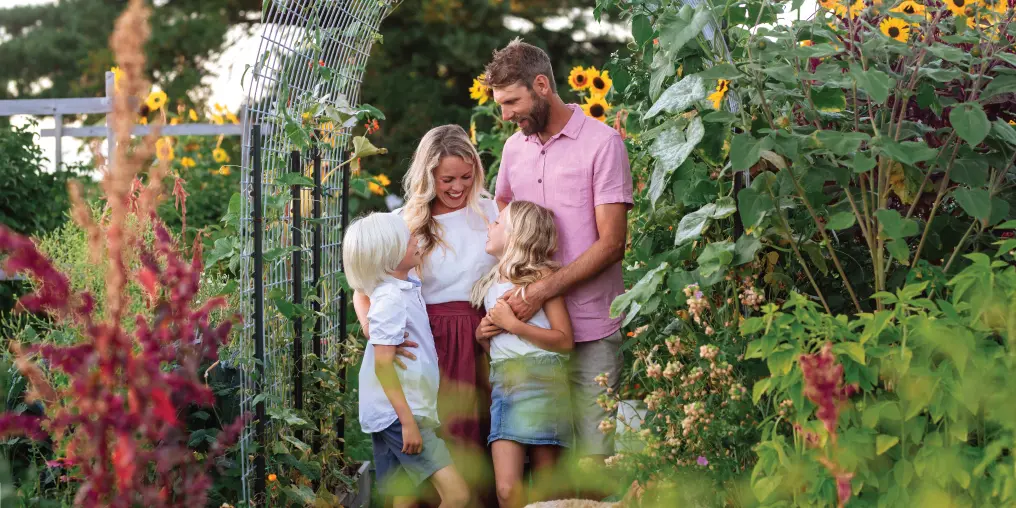
Much like sourcing local food, sourcing locally grown flowers has a positive impact on our carbon footprint. Many of the imported flowers are sprayed to make them last weeks and weeks. Similar to local growers, my flowers are grown and harvested at their optimal time without the use of chemicals or pesticides. Like fresh produce, flowers are meant to decompose.
A year-round commitment
My commitment to caring for my plants is almost year-round. I begin to sow seeds in January, begin the harvest in April, spend my days in the dirt until the first frost in late October, and finish the season planting spring bulbs in November. I also dry flowers that provide stunning, everlasting bouquets during all the seasons.
I chose the name Language of Flowers for my bouquets due to my fascination with floriography and the language of each flower. In addition to beauty, I want to give meaning—connecting to the energy of the flower itself. Flowers speak to us—they allow us to communicate and emote without words.
Being with my flowers, hands in the soil, allows me to communicate and heal in ways I could have never imagined. They allow me to merge the pleasure of beautiful bouquets and arrangements with horticulture therapy.
My seasonal offerings are placed on my precious flower cart, “Vivi,” here in my garden. I found her on Facebook Marketplace and named her after my grandmother, Vivian. My sister gifted me the most beautiful sign in my grandmother’s handwriting that reads: “Vivi: who inspired the love language of gardening.”

